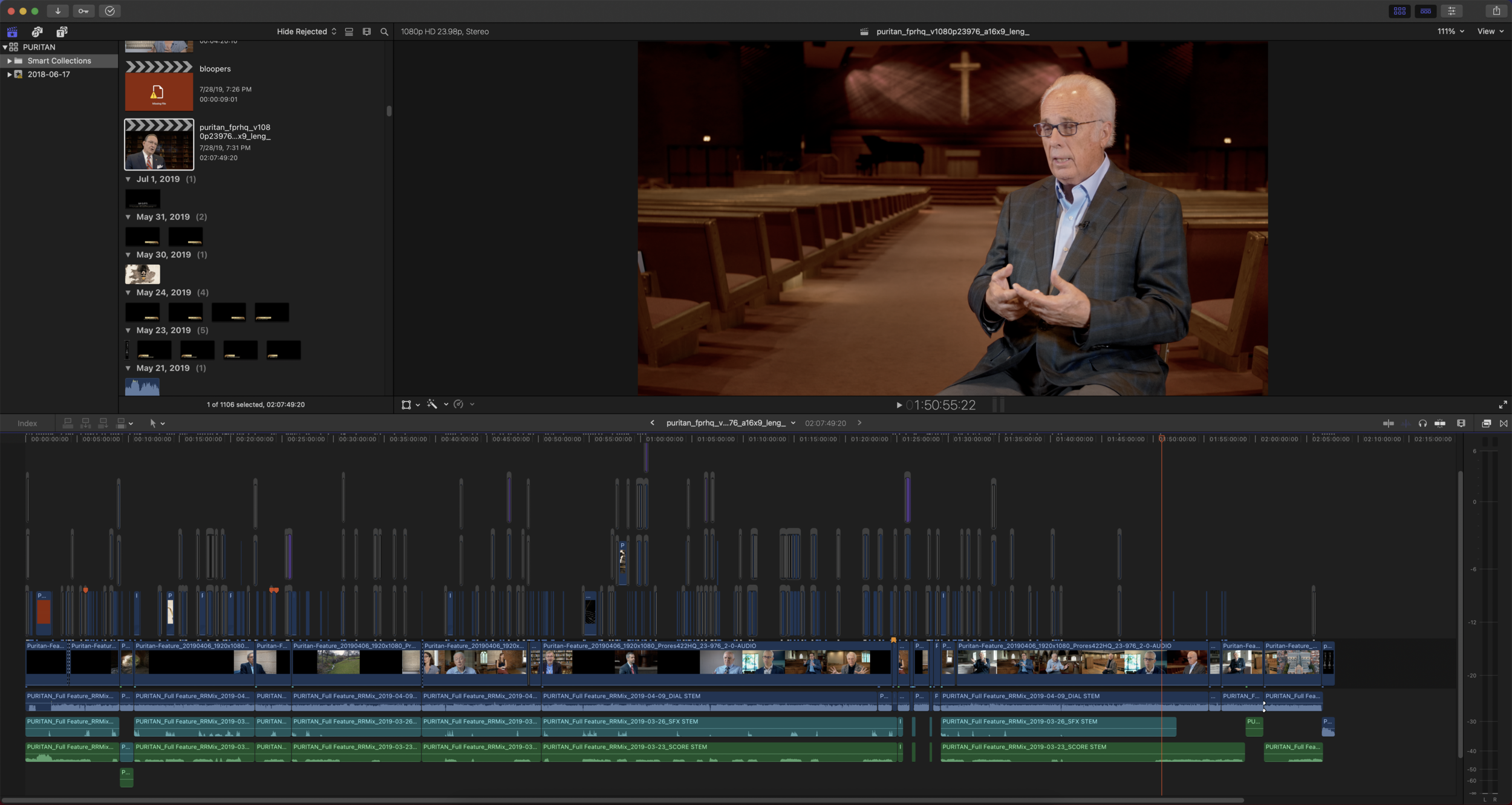Guide to Documentary Filmmaking Pt.7: Post-Production
Now, it’s time to edit all that footage. The first question you will ask is, what non linear editor (NLE) am I going to use? For the first 3-4 years of my professional video career, I used Adobe Premiere almost exclusively. In 2016, I made the move to Final Cut (FCPX), and I haven’t looked back. The way FCPX lets you organize media makes it my ideal NLE for documentaries. I highly recommend this article from Reuben Evans on frame.io titled Edit Faster and More Efficiently with FCP X’s Metadata.
Tip: Edit as you shoot. When I first started I shot everything. I mean everything. You definitely want to have an excess of footage, but as you do more projects, you learn to edit as you shoot, which conserves media storage and also makes your life easier when it comes to editing.
When it comes to rendering different versions, I’ve learned that proper file naming can go a long way. My projects/sequences will look something like this for each render:
ProjectName_RoughDraft_v1_insertdaysdate
ProjectName_RoughDraft_v2_insertdaysdate
ProjectName_RoughDraft_v3_insertdaysdate
—
ProjectName_FinalDraft_v1_insertdaysdate
ProjectName_FinalDraft_v2_insertdaysdate
ProjectName_FinalDraft_v3_insertdaysdate
—
ProjectName_Final_v1_insertdaysdate
ProjectName_Final_v2_insertdaysdate
ProjectName_Final_v3_insertdaysdate
You’ll have dozens and dozens of project files, but having a naming system will give you an idea of how it’ll look when you’re done and a way to organize. When you have your final FINAL version, you’ll want to name it something like this:
ProjectName_codec_resolutionframerate_aspectratio_language_date
It will come out to something like this:
Puritan_PRORES_v1080p23976_a16x9_leng_11.18.20
Final Puritan edit before final render.
Some thoughts on editing
Piecing together footage can simultaneously be the most rewarding and frustrating experience. There are several articles and videos out there explaining helpful methodologies to approaching your footage (to be sure, I have given you some methods above), but ultimately it comes down to one simple, complex, and beautiful word. Story.
Story is everything. Story is the very heart of the project, and without a solid story your project will always come up short. Story is how we steal past those watchful dragons.
Fighting perfectionism
As with any creative endeavor, at some point you’re going have to “send it off to the printers.” Sure, you’ll have multiple review stages with different people, but at some point you need to say it’s done and move on to the next stage. This is sometimes the hardest part. When is it done?
Most artists strive for perfection. Why would we want something made public that is anything less than perfect? We want the perfect piece, the perfect story, the perfect shot, the perfect score…the list goes on. Joanna Gaines (yes, that one) explains this well when she says, “There’s a fine balance between perfection and crap, and I’m trying to find the middle place.”
That is my experience also. You might feel one week that you have a perfect piece, but the next week when you look at the same thing, it feels like garbage. This is normal. And good, I think. If we were always satisfied with our work, would we have the drive to get better? Probably not.
In part 8 we will be wrapping this guide up by talking about manufacturing, distribution, and some closing thoughts on the process as a whole. If you have a question or found this helpful, please leave a comment below or send me an email.
Stay watchful.

